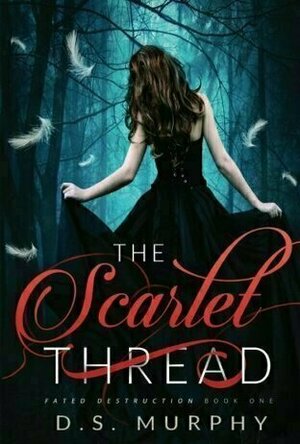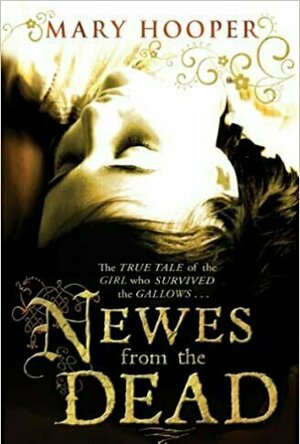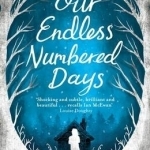Search
Search results
Kayleigh (12 KP) rated Newes from the Dead in Books
Jan 2, 2019
I stumbled across the blurb of this book while looking at the Totally Random Books website. It's really intriguing and, as I read around, I could see that the book is based on a true story. That was it, I had to buy it! It didn't disappoint, and I read it in a day.
While this is a YA book, it's worth pointing out that it deals with some really adult themes, which is something to consider if you're thinking of letting a teenager read it. I'll outline the main points in the next paragraph, so if you don't want any spoilers at all, skip this bit. The chapters flick between the events that led up to Anne's hanging, and what happens while she's laid on the dissecting table, apparently dead. Her downfall comes when the master's grandson promises her the world in exchange for him getting his end away, shall we say. As tends to happen, she becomes pregnant, which she manages to keep a secret until she miscarries. She has the 'audacity' to tell people who the father was, so never receives a fair trial, and is sentenced to death by hanging for the murder of her child. Her sentence is carried out, but she regains consciousness while on the dissecting table. However, she's unable to move a muscle, even to scream.
Anne is a nice girl with a promising, if humble, future, and I liked her. Even while I was willing her not to trust the father of her child, I could understand why she did what she did, and I felt really sorry for her as she lost a lot. The events of both storylines were fascinating, and in the dissection chapters I was constantly willing the doctors to notice what was going on. Although I knew they wouldn't cut into her and it was a little drawn out, some parts got quite tense, which I liked.
Being a sucker for history, I really liked the way everything was portrayed. [a:Mary Hooper|139257|Mary Hooper|http://d202m5krfqbpi5.cloudfront.net/authors/1310022486p2/139257.jpg], the author, made me realise how important it was in how you were perceived in those times - if you think gossip can be bad now, it was a million times worse in 1650, when holding someone's hand, even for an innocent reason, can potentially start a deadly rumour. I thought the book brought across everything that would have happened at the time really accurately and realistically. I know the author had true events to go on, but Anne's life before her hanging was all imagined. There's a note from Hooper at the end that specifies what records say about what happened to Anne Green after her hanging, which is also really interesting. I'll definitely be checking out more of Hooper's books!
If you liked this review please check out my <a href="http://www.a-worldofwords.com">blog!</a>;
While this is a YA book, it's worth pointing out that it deals with some really adult themes, which is something to consider if you're thinking of letting a teenager read it. I'll outline the main points in the next paragraph, so if you don't want any spoilers at all, skip this bit. The chapters flick between the events that led up to Anne's hanging, and what happens while she's laid on the dissecting table, apparently dead. Her downfall comes when the master's grandson promises her the world in exchange for him getting his end away, shall we say. As tends to happen, she becomes pregnant, which she manages to keep a secret until she miscarries. She has the 'audacity' to tell people who the father was, so never receives a fair trial, and is sentenced to death by hanging for the murder of her child. Her sentence is carried out, but she regains consciousness while on the dissecting table. However, she's unable to move a muscle, even to scream.
Anne is a nice girl with a promising, if humble, future, and I liked her. Even while I was willing her not to trust the father of her child, I could understand why she did what she did, and I felt really sorry for her as she lost a lot. The events of both storylines were fascinating, and in the dissection chapters I was constantly willing the doctors to notice what was going on. Although I knew they wouldn't cut into her and it was a little drawn out, some parts got quite tense, which I liked.
Being a sucker for history, I really liked the way everything was portrayed. [a:Mary Hooper|139257|Mary Hooper|http://d202m5krfqbpi5.cloudfront.net/authors/1310022486p2/139257.jpg], the author, made me realise how important it was in how you were perceived in those times - if you think gossip can be bad now, it was a million times worse in 1650, when holding someone's hand, even for an innocent reason, can potentially start a deadly rumour. I thought the book brought across everything that would have happened at the time really accurately and realistically. I know the author had true events to go on, but Anne's life before her hanging was all imagined. There's a note from Hooper at the end that specifies what records say about what happened to Anne Green after her hanging, which is also really interesting. I'll definitely be checking out more of Hooper's books!
If you liked this review please check out my <a href="http://www.a-worldofwords.com">blog!</a>;
Heather Cranmer (2721 KP) rated The Thousand Year Curse in Books
Jun 7, 2018
(This review can be found on my blog <a href="http://themisadventuresofatwentysomething.blogspot.com/">The (Mis)Adventures of a Twenty-Something Year Old Girl</a> towards the end of September).
When I first found out about this book, I was very interested. I couldn't wait to read it! Luckily, it totally delivered.
Ryder is a 17 year old high school student who isn't very popular. Her ex-best friend makes her life a living hell at school. When Ollie arrives, he takes an immediate interest. Ryder is thrilled and feels as if Ollie is her soul mate. Not much later, Ari turns up, and Ryder can't help but feel as if she's known him. There's also some kind of attraction there. Ryder must choose between the two boys. As if that wasn't hard enough, Ryder has just found out her mother is a Greek goddess. Ryder wants to find her mother but doing so may put everyone in danger.
The title is definitely interesting. It does go with what the books about, and I think it's an awesome choice.
To be honest, I'm not really a fan of the cover. I think it's just a personal thing simply because I'm not a big fan of symbolism. I do like the whole pretty flower in the midst of dead things, but I just don't like it for this book. It doesn't really say much about the book.
The world building is alright. There's a few things that hurt the world building. For example, it seemed to me that Ryder just accepted everything she was told at face value. Sure, a few weird things are happening to her, but it's like she's told by a boy she just met, and she believes it all. Her best friend is even worse. He's told that Ryder is a half-goddess, and he just believes it with no questions asked. Also, I don't really think this whole curse is explained well enough. In fact, I'm still a little confused about the curse. So if both guys find her, even if she chooses one, she'll die a horrible death and be reincarnated? I'm just wondering how long she has before she dies because it just seemed like the curse wasn't that imminent. There's also Ryder's powers. She's had super strength since the beginning of the book, yet later on she has another super strength episode, and she acts like it's the first one she's had and is all shocked. Another thing that I found confusing was the whole reincarnation thing. She's been reincarnated by Hades for a thousand years. This life, she is a half goddess which makes things a bit difficult for Hades. Surely if Hades is the one that put the curse on her, then he should've been able to make her human. Saying that, I don't want people to think the world building is horribly written. It's far from it actually. The world is very interesting, but I just tend to over think things, I think. (See what I mean)?
The pacing is great in this book. The pacing really picks up during the Hell scenes, I thought. These were the scenes that held my attention the most although the whole book held my attention. The Hell scenes just made me want to read faster to find out what would happen next!
The plot is definitely an interesting one. I love the infusion of Greek mythology, and Ms. Lavati does an excellent job of making mythology work in her book. I've read a few books where the author tried to use some sort of mythology, and the book was just too boring. However, The Thousand Year Curse is by no means boring! There is a love triangle, and I usually hate them, but this one works in this story. I also like the fact that the plot involved going into Hell. That was definitely a good move on Ms. Lavati's part to include it in her book. There's no cliff hangar ending, but there are questions left unanswered to make way for the second book in the series. I, personally, am looking forward to the next book in the series.
The characters were written really well. I liked Ryder, and I liked how she dealt with her problems. At times, I did get annoyed with her because I just wanted her to choose one guy. However, I would have to remind myself that without this problem, there'd be no series. Ryder felt like a real girl and not just words on a paper. Ollie was written really well, but I just didn't like him. For one, I felt like he was just too serious. I also felt like he was too distant with Ryder a lot of the time. I also wanted to see more about Ollie in the book. My favorite character was Ari. I swooned over Ari! He had enough of that bad boy personality without being too much of an annoying character. I liked how he liked to take chances, and it seemed like he knew how to have fun. I'm Team Ari all the way! I'm hoping that Ryder ends up with Ari in the long run. I can actually feel the chemistry between those two.
There are quite a lot of grammar errors in this book. I feel that it does affect the quality of the book a little bit, but not so much so that it makes it unreadable. However, the dialogue in this book is fantastic especially in the scenes that Ari is in. (Okay, so I'm a bit biased). The characters all speak like they're from this time period even though two of them are gods. I was super thankful the characters spoke like normal people. I've read a book before where the character who is a god spoke rather strangely hence why I was so happy with the dialogue in this book.
Overall, The Thousand Year Curse by Taylor Lavati is an enjoyable read. Sure, it could do with some better editing and the world building could've used a little bit of work, but it's still really interesting. Plus, I've learned that Ms. Lavati wrote this book in 30 days for the NaNoWriMo competition. After learning that, my respect for Ms. Lavati went up a lot! To write a book as good as The Thousand Year Curse in 30 days is no small feat. After saying that, I'm definitely looking forward to reading the next book in the series!
I'd recommend this book to those aged 17+ who are after a fantastic book with Greek mythology infusions.
(I was provided with a free paperback copy of this title from the author in exchange for a fair and honest review).
When I first found out about this book, I was very interested. I couldn't wait to read it! Luckily, it totally delivered.
Ryder is a 17 year old high school student who isn't very popular. Her ex-best friend makes her life a living hell at school. When Ollie arrives, he takes an immediate interest. Ryder is thrilled and feels as if Ollie is her soul mate. Not much later, Ari turns up, and Ryder can't help but feel as if she's known him. There's also some kind of attraction there. Ryder must choose between the two boys. As if that wasn't hard enough, Ryder has just found out her mother is a Greek goddess. Ryder wants to find her mother but doing so may put everyone in danger.
The title is definitely interesting. It does go with what the books about, and I think it's an awesome choice.
To be honest, I'm not really a fan of the cover. I think it's just a personal thing simply because I'm not a big fan of symbolism. I do like the whole pretty flower in the midst of dead things, but I just don't like it for this book. It doesn't really say much about the book.
The world building is alright. There's a few things that hurt the world building. For example, it seemed to me that Ryder just accepted everything she was told at face value. Sure, a few weird things are happening to her, but it's like she's told by a boy she just met, and she believes it all. Her best friend is even worse. He's told that Ryder is a half-goddess, and he just believes it with no questions asked. Also, I don't really think this whole curse is explained well enough. In fact, I'm still a little confused about the curse. So if both guys find her, even if she chooses one, she'll die a horrible death and be reincarnated? I'm just wondering how long she has before she dies because it just seemed like the curse wasn't that imminent. There's also Ryder's powers. She's had super strength since the beginning of the book, yet later on she has another super strength episode, and she acts like it's the first one she's had and is all shocked. Another thing that I found confusing was the whole reincarnation thing. She's been reincarnated by Hades for a thousand years. This life, she is a half goddess which makes things a bit difficult for Hades. Surely if Hades is the one that put the curse on her, then he should've been able to make her human. Saying that, I don't want people to think the world building is horribly written. It's far from it actually. The world is very interesting, but I just tend to over think things, I think. (See what I mean)?
The pacing is great in this book. The pacing really picks up during the Hell scenes, I thought. These were the scenes that held my attention the most although the whole book held my attention. The Hell scenes just made me want to read faster to find out what would happen next!
The plot is definitely an interesting one. I love the infusion of Greek mythology, and Ms. Lavati does an excellent job of making mythology work in her book. I've read a few books where the author tried to use some sort of mythology, and the book was just too boring. However, The Thousand Year Curse is by no means boring! There is a love triangle, and I usually hate them, but this one works in this story. I also like the fact that the plot involved going into Hell. That was definitely a good move on Ms. Lavati's part to include it in her book. There's no cliff hangar ending, but there are questions left unanswered to make way for the second book in the series. I, personally, am looking forward to the next book in the series.
The characters were written really well. I liked Ryder, and I liked how she dealt with her problems. At times, I did get annoyed with her because I just wanted her to choose one guy. However, I would have to remind myself that without this problem, there'd be no series. Ryder felt like a real girl and not just words on a paper. Ollie was written really well, but I just didn't like him. For one, I felt like he was just too serious. I also felt like he was too distant with Ryder a lot of the time. I also wanted to see more about Ollie in the book. My favorite character was Ari. I swooned over Ari! He had enough of that bad boy personality without being too much of an annoying character. I liked how he liked to take chances, and it seemed like he knew how to have fun. I'm Team Ari all the way! I'm hoping that Ryder ends up with Ari in the long run. I can actually feel the chemistry between those two.
There are quite a lot of grammar errors in this book. I feel that it does affect the quality of the book a little bit, but not so much so that it makes it unreadable. However, the dialogue in this book is fantastic especially in the scenes that Ari is in. (Okay, so I'm a bit biased). The characters all speak like they're from this time period even though two of them are gods. I was super thankful the characters spoke like normal people. I've read a book before where the character who is a god spoke rather strangely hence why I was so happy with the dialogue in this book.
Overall, The Thousand Year Curse by Taylor Lavati is an enjoyable read. Sure, it could do with some better editing and the world building could've used a little bit of work, but it's still really interesting. Plus, I've learned that Ms. Lavati wrote this book in 30 days for the NaNoWriMo competition. After learning that, my respect for Ms. Lavati went up a lot! To write a book as good as The Thousand Year Curse in 30 days is no small feat. After saying that, I'm definitely looking forward to reading the next book in the series!
I'd recommend this book to those aged 17+ who are after a fantastic book with Greek mythology infusions.
(I was provided with a free paperback copy of this title from the author in exchange for a fair and honest review).
graveyardgremlin (7194 KP) rated The Other Boleyn Girl in Books
Feb 15, 2019
Going into <b>The Other Boleyn Girl</b> I already knew that the historical details weren't very factual, but I had this laying around and needed something both light and set in the past, so I figured this would do nicely. The writing itself is perfectly fine, and mostly, I did enjoy the book. Although, for the first half, it seemed as if everyone only wore red and by the end I got so sick of hearing about Anne's "B" for Boleyn necklace I could scream.
Mary Boleyn, the narrator, is a strange character: sympathetic and of reasonable intelligence one minute, a moronic irritant the next. Personality-wise she went up and down and back and forth. First she was fine not being the King's favorite anymore and seeming to want to leave the court life for the country to be with her children, then she was jealous of a title Anne received, years after the affair between Mary and Henry was over. Possibly this was put in as part of the rivalry between the sisters, but it didn't contextually fit. Her development could have used more work and she didn't mature or change much throughout the whole book, especially between the years 1522 to 1533. I seriously got tired of everybody's patronizing and calling her a fool all the time. They should have just named the book, <b>The Foolish Boleyn Girl</b>. I find it hard to believe Mary was so ignorant the king would have continued to have her as mistress for four years, give or take. She had to offer something other than good looks and being great in the bedroom. Anne herself sure was a piece of work, and even though she was pretty much evil throughout the book, I did still feel sorry for her at the end. Jane Parker was a one-dimensional malicious harpy who wasn't given a reason why she was that way; she was just the resident baddy to the Boleyns. To me, it felt like defamation of character.
Politics and the separation of the Church of England from the Catholic Church were merely mentioned in passing as court life and its primary players took center stage. The whole incest plot, I could have done without. Now if it were the absolute truth then it'd be okay, but since it's highly debatable and based on hearsay, I found it unnecessary and gratuitous. Around the two-thirds mark, the pace let up and it became more sluggish and boring, and it wasn't until the last sixty pages that it recaptured my attention again.
As long as readers know going into this book that the history has been twisted around and invented for pure sensation, then it's fine as a fictional read, but take any "facts" with a grain of salt. While it was an okay read, I didn't love it, but it managed to divert my attention for a few days.
One last note dealing with the fourth question in the Q&A with Philippa Gregory in the back of the book:
<blockquote>How about Mary and Anne's brother, George? Did he really sleep with his sister so that she could give Henry a son?
<i>Nobody can know the answer to this one. Anne was accused of adultery with George at their trials and his wife gave evidence against them both. Most people think the trial was a show trial, but it is an interesting accusation. Anne had three miscarriages by the time of her trial, and she was not a woman to let something like sin or crime stand in her way--she was clearly guilty of one murder. I think if she had thought that Henry could not bear a son she was quite capable of finding someone to father a child on her. If she thought that, then George would have been the obvious choice.</i></blockquote>
Obvious? How in the world is that obvious? You cannot be serious, Ms. Gregory. Now I'm far from an expert in Tudor England, but I cannot imagine that being a common practice. Maybe someone more knowledgeable about this time could tell me if that ever happened, because it just boggles my mind that George would be the "<i>obvious choice</i>." Not to mention, who the hell did Anne supposedly kill? I hadn't heard that anywhere. Even my searches are coming up blank.
Mary Boleyn, the narrator, is a strange character: sympathetic and of reasonable intelligence one minute, a moronic irritant the next. Personality-wise she went up and down and back and forth. First she was fine not being the King's favorite anymore and seeming to want to leave the court life for the country to be with her children, then she was jealous of a title Anne received, years after the affair between Mary and Henry was over. Possibly this was put in as part of the rivalry between the sisters, but it didn't contextually fit. Her development could have used more work and she didn't mature or change much throughout the whole book, especially between the years 1522 to 1533. I seriously got tired of everybody's patronizing and calling her a fool all the time. They should have just named the book, <b>The Foolish Boleyn Girl</b>. I find it hard to believe Mary was so ignorant the king would have continued to have her as mistress for four years, give or take. She had to offer something other than good looks and being great in the bedroom. Anne herself sure was a piece of work, and even though she was pretty much evil throughout the book, I did still feel sorry for her at the end. Jane Parker was a one-dimensional malicious harpy who wasn't given a reason why she was that way; she was just the resident baddy to the Boleyns. To me, it felt like defamation of character.
Politics and the separation of the Church of England from the Catholic Church were merely mentioned in passing as court life and its primary players took center stage. The whole incest plot, I could have done without. Now if it were the absolute truth then it'd be okay, but since it's highly debatable and based on hearsay, I found it unnecessary and gratuitous. Around the two-thirds mark, the pace let up and it became more sluggish and boring, and it wasn't until the last sixty pages that it recaptured my attention again.
As long as readers know going into this book that the history has been twisted around and invented for pure sensation, then it's fine as a fictional read, but take any "facts" with a grain of salt. While it was an okay read, I didn't love it, but it managed to divert my attention for a few days.
One last note dealing with the fourth question in the Q&A with Philippa Gregory in the back of the book:
<blockquote>How about Mary and Anne's brother, George? Did he really sleep with his sister so that she could give Henry a son?
<i>Nobody can know the answer to this one. Anne was accused of adultery with George at their trials and his wife gave evidence against them both. Most people think the trial was a show trial, but it is an interesting accusation. Anne had three miscarriages by the time of her trial, and she was not a woman to let something like sin or crime stand in her way--she was clearly guilty of one murder. I think if she had thought that Henry could not bear a son she was quite capable of finding someone to father a child on her. If she thought that, then George would have been the obvious choice.</i></blockquote>
Obvious? How in the world is that obvious? You cannot be serious, Ms. Gregory. Now I'm far from an expert in Tudor England, but I cannot imagine that being a common practice. Maybe someone more knowledgeable about this time could tell me if that ever happened, because it just boggles my mind that George would be the "<i>obvious choice</i>." Not to mention, who the hell did Anne supposedly kill? I hadn't heard that anywhere. Even my searches are coming up blank.
Goddess in the Stacks (553 KP) rated Our Endless Numbered Days in Books
Sep 26, 2018
I don't like unreliable narrators. I didn't realize, at first, that Peggy was one. Even though she mentions at the start of the book that a doctor said she had Korsakoff's syndrome - meaning malnutrition has messed with her memories - I assumed that it was just because her experiences were so unbelievable that the doctor thought she'd made things up. I also don't like unreliable narrators because the author obviously knows what truly happened. Leaving the reader in the dark about it seems rude.
Peggy's narration does seem childlike, often. While at the beginning of the book, that can be excused because she is eight years old, by the end she is seventeen, yet still talking about things with a child's understanding. I thought that was the effect of Korsakoff's syndrome, not that she was entirely making some things up.
In our endless numbered days, Peggy is effectively kidnapped by her father when she is eight, and taken to some place deep in the German forest. She spends the next nine years alone in the forest with him, trapping squirrels, gathering roots and berries, and growing simple crops in a small vegetable patch. He tells her, repeatedly, making her repeat it back to him, that the rest of the world was destroyed in a massive storm. They are the last two people alive in their small, sheltered valley. She doesn't question it until she sees a man in their forest, and that eventually leads her to find civilization again. The book is told in two timelines, flashing back and forth from her memories of her time in the forest, and the present where she's attempting to re-acclimate to London.
I'm not really sure what to believe; Peggy's memory or what her mother thinks happened. There are just enough oddities to make either story plausible. I think I prefer Peggy's version. But that's the trouble with unreliable narrators; there's no way to actually know. I don't like ending a book frustrated. Books should make you feel things, yes, but frustration is an odd emotion to aim for.
This book is odd.
You can find all my reviews at http://goddessinthestacks.com
Peggy's narration does seem childlike, often. While at the beginning of the book, that can be excused because she is eight years old, by the end she is seventeen, yet still talking about things with a child's understanding. I thought that was the effect of Korsakoff's syndrome, not that she was entirely making some things up.
In our endless numbered days, Peggy is effectively kidnapped by her father when she is eight, and taken to some place deep in the German forest. She spends the next nine years alone in the forest with him, trapping squirrels, gathering roots and berries, and growing simple crops in a small vegetable patch. He tells her, repeatedly, making her repeat it back to him, that the rest of the world was destroyed in a massive storm. They are the last two people alive in their small, sheltered valley. She doesn't question it until she sees a man in their forest, and that eventually leads her to find civilization again. The book is told in two timelines, flashing back and forth from her memories of her time in the forest, and the present where she's attempting to re-acclimate to London.
I'm not really sure what to believe; Peggy's memory or what her mother thinks happened. There are just enough oddities to make either story plausible. I think I prefer Peggy's version. But that's the trouble with unreliable narrators; there's no way to actually know. I don't like ending a book frustrated. Books should make you feel things, yes, but frustration is an odd emotion to aim for.
This book is odd.
You can find all my reviews at http://goddessinthestacks.com
ClareR (6037 KP) rated The Sisters Grimm in Books
Feb 25, 2020
The Sisters Grimm sounds like it’s going to be a fairytale, doesn’t it? But it isn’t in the childish sense of the word. If you’ve ever read any of the original Grimm’s fairytales, they’re rather more macabre - and people don’t always get their happy endings.
Sisters Grimm don’t actually know that that’s what they are. They may have vague memories (pre-puberty - and this is important) of playing in a fairytale wood, where they can do magical, amazing things, but they put it down to dreams later. That is until they approach their 18th birthdays, and some of these dream-like abilities start to manifest themselves.
This story is based around four girls who first met at 8 years old in the fairytale dream-world, Everwhere, forget one another after their 13th birthdays, and begin to remember closer to their impending 18th birthdays. They all have a different mother, but the same father who they will meet in Everwhere on the evening of their birthday. And it’s really important that they find one another again prior to this confrontation - where they will discover the truth about themselves.
I really enjoyed this. It says on Goodreads that it’s a Young Adult novel, and whilst it’s immaterial whether I agree with this or not, I do agree that it’s about reaching an age where you are finding out more about yourself and your impending independence, and that can’t be a bad thing for young people to read about.
I liked the darkness in this book - it’s no twee fairytale. There’s death, murder in fact, as a pretty major theme. And people aren’t necessarily nice. They lie, they’re selfish and they keep secrets that are best known.
The only negative I can think of, is that I really thought that this was going to be set up for the first part of a series. The end seemed quite rushed to me, and I’d love to know more about what happens afterwards. Well, that’s not really a negative, is it? That’ll be why I gave it top marks, to be honest - it’s a great book!
Many thanks to The Pigeonhole for serialising this book - another great choice!
Sisters Grimm don’t actually know that that’s what they are. They may have vague memories (pre-puberty - and this is important) of playing in a fairytale wood, where they can do magical, amazing things, but they put it down to dreams later. That is until they approach their 18th birthdays, and some of these dream-like abilities start to manifest themselves.
This story is based around four girls who first met at 8 years old in the fairytale dream-world, Everwhere, forget one another after their 13th birthdays, and begin to remember closer to their impending 18th birthdays. They all have a different mother, but the same father who they will meet in Everwhere on the evening of their birthday. And it’s really important that they find one another again prior to this confrontation - where they will discover the truth about themselves.
I really enjoyed this. It says on Goodreads that it’s a Young Adult novel, and whilst it’s immaterial whether I agree with this or not, I do agree that it’s about reaching an age where you are finding out more about yourself and your impending independence, and that can’t be a bad thing for young people to read about.
I liked the darkness in this book - it’s no twee fairytale. There’s death, murder in fact, as a pretty major theme. And people aren’t necessarily nice. They lie, they’re selfish and they keep secrets that are best known.
The only negative I can think of, is that I really thought that this was going to be set up for the first part of a series. The end seemed quite rushed to me, and I’d love to know more about what happens afterwards. Well, that’s not really a negative, is it? That’ll be why I gave it top marks, to be honest - it’s a great book!
Many thanks to The Pigeonhole for serialising this book - another great choice!

Gangstar Vegas
Games and Entertainment
App
Roll up on a dangerous new trip through the City of Sin in the latest episode of the acclaimed...

TOR-Powered Onion Web Browser - Anonymous Browsing
Utilities and Productivity
App
Tor Powered Onion Browser is a free proxy app that empowers other apps to use the internet more...

The Scarlet Thread (Fated Destruction, #1)
Book
My name Kaidance Monroe, and sometimes when I touch people, I see how they die. After I saw my...
Becs (244 KP) rated Of Mice and Men in Books
Oct 2, 2019
Contains spoilers, click to show
Of Mice and Men by John Steinbeck, a (somewhat) great historical fiction novel. I was just appalled by how slow the middle of the book was. I was so excited to read this book, as I’ve heard such great things about it. When I started, it was a little bumpy but as I kept reading, the road just kept becoming almost unbearable to continue. The ending though, spot on and definitely kicked my attention back into place. In all aspects, Of Mice and Men deserves a solid four gold stars. Reasons why below.
Genre: Literary classic, historical fiction
Audience: I definitely recommend at least a high schooler or up to read it. As it’s a little controversial and a bit harder of a read for a younger crowd.
Difficulty Reading: I almost put this down to never pick up and read again. I was about a millimeter away from doing it. But I have a thing against never finishing a book or DNF. If I’m going to pick something up and start reading it, I HAVE TO finish it, something about having an unfinished book doesn’t sit right with me. So, the answer is yes. This was a bit more of a difficult read. Now that it’s finished, I’m glad I stuck through and read the rest of the novel.
Insights: John Steinbeck is a great author and writer. I’ve read a few of his other novels and have loved them. Of Mice and Men just does not compare to the others. Maybe it’s the way that the characters speak. Maybe it’s the topic. Maybe it’s just Steinbeck lost touch with his writing when creating Of Mice and Men. Who knows, apparently some think that this novel is a piece of art. I mean, it’s still being sold nationwide. That must mean it’s somewhat good, right?
Ah-Ha Moment: When I found out that Lennie has a bit of a mental handicap issue. (This honestly sounds so bad in writing but I’m not trying to be rude about people who are mentally handicapped. I use to work as a caretaker for them and I loved it.) To continue on. You typically don’t see this style of character in this novels era. It was refreshing and different from other literary classic novels.
***SPOILERS AHEAD***
Favorite Quotes: “Trouble with mice is you always kill ’em. ” – Honestly, this is a perfect short, one sentence summary of the novel. If you don’t want to read Of Mice and Men, what happens is: you have George and Lennie, always traveling together. Lennie is mentally handicapped and likes to pet soft things. He gets in trouble in Weed by touching a female’s dress and not letting go when she screams. They run and come to find work bucking barley. Here, Lennie kills a newborn pup then kills Curley’s wife. George shoots Lennie in the back of the head and the novel ends.
***END OF SPOILERS***
“Guys like us, that work on ranches, are the loneliest guys in the world. They got no family. They don’t belong no place. They come to a ranch an’ work up a stake, and the first thing you know they’re poundin’ their tail on some other ranch. They ain’t got nothing to look ahead to.” – I mean, you’re not wrong George. Ranchhands are typically pretty lonely, especially in those olden days.
What will you gain: A love-hate relationship for this novel. Seriously. I love it so much I gave it four gold stars. But I hate it so much because man, it was a bit of a bore.
“Maybe ever’body in the whole damn world is scared of each other.”
Genre: Literary classic, historical fiction
Audience: I definitely recommend at least a high schooler or up to read it. As it’s a little controversial and a bit harder of a read for a younger crowd.
Difficulty Reading: I almost put this down to never pick up and read again. I was about a millimeter away from doing it. But I have a thing against never finishing a book or DNF. If I’m going to pick something up and start reading it, I HAVE TO finish it, something about having an unfinished book doesn’t sit right with me. So, the answer is yes. This was a bit more of a difficult read. Now that it’s finished, I’m glad I stuck through and read the rest of the novel.
Insights: John Steinbeck is a great author and writer. I’ve read a few of his other novels and have loved them. Of Mice and Men just does not compare to the others. Maybe it’s the way that the characters speak. Maybe it’s the topic. Maybe it’s just Steinbeck lost touch with his writing when creating Of Mice and Men. Who knows, apparently some think that this novel is a piece of art. I mean, it’s still being sold nationwide. That must mean it’s somewhat good, right?
Ah-Ha Moment: When I found out that Lennie has a bit of a mental handicap issue. (This honestly sounds so bad in writing but I’m not trying to be rude about people who are mentally handicapped. I use to work as a caretaker for them and I loved it.) To continue on. You typically don’t see this style of character in this novels era. It was refreshing and different from other literary classic novels.
***SPOILERS AHEAD***
Favorite Quotes: “Trouble with mice is you always kill ’em. ” – Honestly, this is a perfect short, one sentence summary of the novel. If you don’t want to read Of Mice and Men, what happens is: you have George and Lennie, always traveling together. Lennie is mentally handicapped and likes to pet soft things. He gets in trouble in Weed by touching a female’s dress and not letting go when she screams. They run and come to find work bucking barley. Here, Lennie kills a newborn pup then kills Curley’s wife. George shoots Lennie in the back of the head and the novel ends.
***END OF SPOILERS***
“Guys like us, that work on ranches, are the loneliest guys in the world. They got no family. They don’t belong no place. They come to a ranch an’ work up a stake, and the first thing you know they’re poundin’ their tail on some other ranch. They ain’t got nothing to look ahead to.” – I mean, you’re not wrong George. Ranchhands are typically pretty lonely, especially in those olden days.
What will you gain: A love-hate relationship for this novel. Seriously. I love it so much I gave it four gold stars. But I hate it so much because man, it was a bit of a bore.
“Maybe ever’body in the whole damn world is scared of each other.”
Susan (45 KP) rated Eat Pray Love: One Woman's Search for Everything in Books
Jul 4, 2017
A book that inspires you to live while you're alive and to find yourself (2 more)
Easy to get lost in this book, you'll find yourself wandering thru Rome, India and Bali, personally experiencing Elizabeth's journey
Loss, humor, insight and drama and romance, this book has it all
"I used to have this appetite for my life. And now it’s just gone. I want to go someplace where I can MARVEL at something." Elizabeth Gilbert
Contains spoilers, click to show
Elizabeth Gilbert is one of my favorite authors so I knew this would be an amazing book and I was not disappointed! She has this amazing ability to make you forget you're reading a book...suddenly you're in the book, experiencing everything due to the beautiful detail and honesty with which she writes. An inspiration to everyone who has ever felt lost, stuck, hopeless or lost their zest for life. While we can't all take off and travel the world to find ourselves like Elizabeth, we can live vicariously through her writing and gain hope, insight and in the end happiness.






